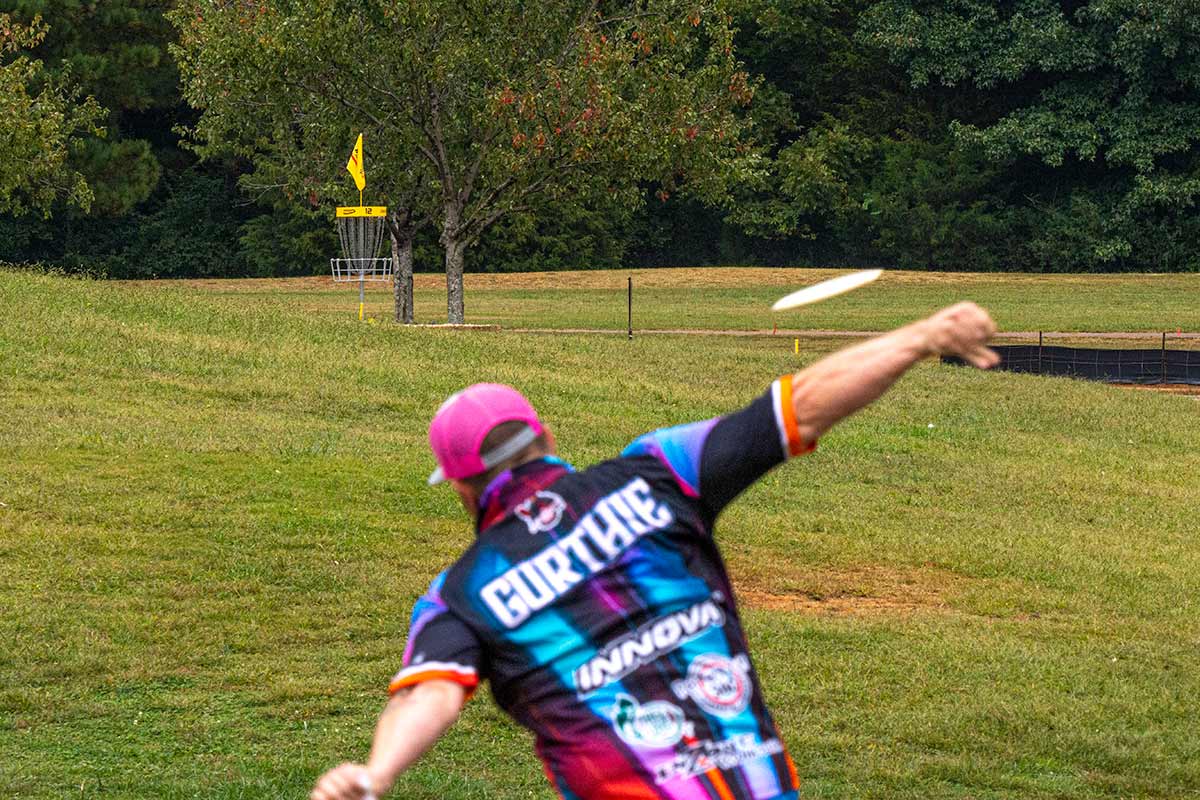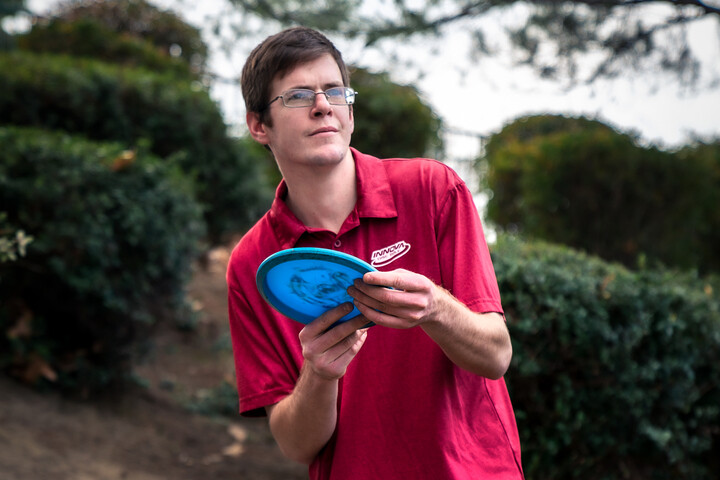Disc Golf Dictionary, Volume III: Throws & Grips
In our first Disc Golf Disctionary article, we covered some of the basic disc golf throwing terminology like backhand, forehand, hyzer vs. anhyzer, etc. For a refresher course on flight basics, you can check out that article below:
Today, we want to dive a little deeper into all the different type of throws, as well as talk about various grips you can use when throwing a disc golf disc. Let’s jump right into these disc golf terms!
Types of Disc Golf Throws
Beyond just the standard backhand and forehand throws, there are so many other different ways to get a flying disc down the fairway or into the disc golf basket. Here are some terms you might hear on the disc golf course and some throwing styles you might want to try for yourself. Some of these are pure utility shots while others are more commonly used by skilled players.
Roller — Sometimes it can be beneficial to purposely roll the disc for extra distance or when escaping a tough lie. There are backhand rollers that you throw at an extreme anhyzer release angle (disc tilted up and away from your body) and you will usually utilize understable discs. You can also throw forehand/overhand rollers with a forehand grip. Overstable discs are usually best for forehand rollers.
Cut Roller — Most roller shots will flip up and roll the direction the top flight plate of the disc is facing (meaning righty backhand rollers will want to finish to the right and righty forehand rollers will want to finish left). You can also roll the disc at a sharper angle and use a more stable disc to achieve a “cut roll” that will tend to hold the opposite direction if thrown properly. Cut rollers are usually more for controlled upshots and getting around obstacles more than for distance.
Overhand Shot — There are various types of overhand shots that we will cover below. This is when you throw the disc with a vertical overhand motion like a baseball pitcher or at an even more exaggerated angle over the top of your head.
Tomahawk — A tomahawk is an overhand shot thrown with a forehand grip. It can be thrown at various overhead angles and with different disc stabilities to achieve controlled flight characteristics (usually a unique corkscrew shape).
Thumber — A thumber is similar to a tomahawk overhand throw, except the disc is gripped upside-down with your thumb under the rim. It will provide the opposite flight path as a tomahawk throw.
Hammer — This is a variant on a tomahawk style shot, though usually thrown with a putter or slower-speed disc that you want to pan out and land flat on its top. It is thrown directly over your head at an exaggerated angle. Also sometimes known as a “pancake” putt to get over obstacles on the green.
Scoober — This is an even more exaggerated hammer-type putt that is throwing from somewhere between your head and your off-hand shoulder. It provides good control and usually stays close to the basket if you miss.
Grenade — A grenade shot is throwing using a thumber grip (or a modified upside-down grip). The disc is then thrown on an extreme hyzer angle. An overstable disc is used to get a straight up and down flight path (to throw over tall obstacles) or a really, really understable disc can be used to get a corkscrew shape with the disc rolling all the way over and gliding out.
Scooby — Some people call the scoober a “Scooby” and some use this term for a grenade shot. You can call them whatever you want. They are fun shots to try and learn!
Horseshoe Putt — This is more of an underhand style shot from the hip, usually thrown with a putter to get over or around an obstacle on the green.
Chicken Wing, Pterodactyl Claw, etc. — There are some other crazy types of throws with silly names, many of which originate in the ultimate Frisbee world. We can’t get into all of them here, but look them up on YouTube. These won’t be used too often in disc golf, but you may see them every once in a while. Check out Big Jerm throwing the funky Pterodactyl Claw in this Facebook video!
Spike Hyzer — This is when you throw a disc on an extreme hyzer angle of release with a regular backhand grip. It will offer lots of control, allow you to get over and around fairway obstacles, and the disc will typically “spike” into the ground rather than skip. A favorite for professional disc golfers.
 Hyzer Flip — The type of disc is important for this shot. The hyzer flip is achieved by throwing a more understable disc on a hyzer angle of release. Ideally, it will flip to flat and then glide out nicely down the fairway. These forehand or backhand throws will typically improve maximum distance.
Hyzer Flip — The type of disc is important for this shot. The hyzer flip is achieved by throwing a more understable disc on a hyzer angle of release. Ideally, it will flip to flat and then glide out nicely down the fairway. These forehand or backhand throws will typically improve maximum distance.
Flex Shot — A flex shot (or “force flex”) is when you throw an overstable disc like a Firebird on an anhyzer release angle with a lot of power. You force the disc to turn over and glide out before it ultimately fades because of its natural stability. It is a good control shot to shape lines through woods and around obstacles.
S-Shot — Also known as a “helix,” this is when you throw a more understable disc like a Mamba on a flat or slight anhyzer angle. It will usually produce a similar S-shaped shot as a flex, but the disc is doing all the work. An understable disc can be thrown with less power to achieve a helix compared to an overstable disc that requires more power to turn over.
Disc Golf Grips
Next, we want to talk about some of the different grips you can try in disc golf. Some grips offer more control while others offer more power potential.
Backhand Grip — The standard way to grip a disc, with your thumb on top and your fingers underneath the rim for a typical backhand throw.
Power Backhand Grip — A power grip for a backhand throw will have your fingers all gripping the inside of the rim firmly to impart more spin and speed when you release the disc.
Fan Grip — A fan grip is a lighter grip with one or more of your fingers “fanned out” underneath the disc as opposed to gripping the inside of the rim. It is good for more control and is commonly used for when you get closer to the disc golf basket, typically putting. Some players like a fan grip for their drives and upshots, as well.
 Forehand Grip — A forehand (or sidearm) throw will have your thumb on top of the disc (or sometimes along the edge for some players). The most common forehand grip is the “stacked” style with your middle finger on the rim and your index finger against it for control and power.
Forehand Grip — A forehand (or sidearm) throw will have your thumb on top of the disc (or sometimes along the edge for some players). The most common forehand grip is the “stacked” style with your middle finger on the rim and your index finger against it for control and power.
Power Forehand Grip — This is an alternative forehand grip where the index finger is bent and putting direct pressure on the inside of the rim to enhance the normal pressure from the middle finger.
Thumber Grip — If throwing a thumber or grenade shot, you will grip the disc upside down with your thumb inside the rim. There is also a “hook” thumber grip variation where you put your index finger over the top of your thumb to apply more pressure or add control.
As you can see, there are many, many different ways to grip and throw a disc to achieve specific results. We recommend watching some videos and trying some of these shots for yourself. They may come in handy out on the course!
